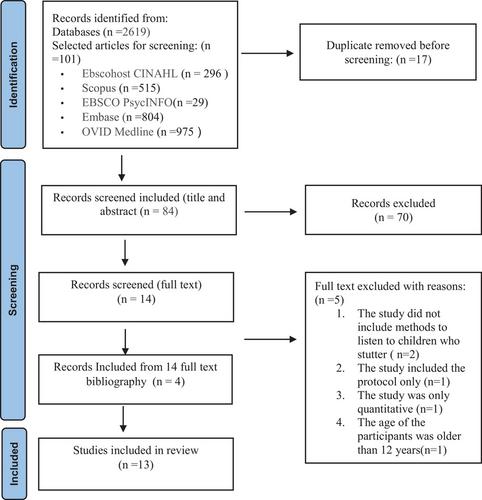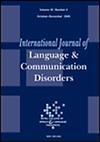Understanding the Perspectives of School Children Who Stutter: A Rapid Review
Abstract
Background
Children who stutter have the right to express their views and be heard. However, in research on stuttering, attention tends to focus mainly on parental and adult perspectives. By actively engaging with children's viewpoints, we can enhance our understanding of their distinct needs and capabilities. This, in turn, enables the development of more personalised and child-centred interventions based on their lived experiences.
Aim
This rapid review aimed to identify qualitative methods in the research literature employed to explore the perspectives of school children who stutter (SCWS) aged 6–12 years and identify topics discussed by the children in such research.
Methods and Procedures
A rapid literature review was conducted using five databases: EBSCO CINAHL, Scopus, EBSCO PsycINFO, Embase, and OVID Medline. The search strategy focused on qualitative or mixed-method peer-reviewed studies and included a manual search of the reference lists of identified papers. The search targeted studies involving school-age children who stutter and excluded grey literature. The findings are presented through data extraction tables and a narrative summary.
Outcomes and Results
Thirteen studies met the inclusion criteria, all of which used at least one qualitative method to elicit the children's voices. A total of 14 methods across the 13 studies were identified. The most common method was open-ended questions as part of semi-structured interviews. In relation to what SCWS expressed about their talking, several insights emerged, including reports of wishing to participate in group discussions in school and fluency changes post-intervention. The findings revealed the multifaceted nature of the experiences of SCWS, from personal frustrations to positive transformations.
Conclusions and Implications
This rapid review provides a comprehensive overview of current qualitative approaches to understanding the perspectives of SCWS. It highlights the need to include the voices of SCWS in research. It advocates for innovative, authentic approaches to data collection and emphasizes the necessity for further research to bridge gaps in understanding the experiences and perspectives of children who stutter.
WHAT THIS PAPER ADDS
- Stuttering goes beyond the act of stuttering and the impact on SCWS is influenced by a range of factors. Listening to the perspectives of SCWS is important to understand their individual needs, which will help facilitate more child-centred practice. It is important to consider that the method of eliciting children's perspectives may affect the results.
- This review identifies current methods used to listen to SCWS and identifies gaps in the research in relation to studies that focus exclusively on exploring the perspectives of SCWS on their talking. Furthermore, it identifies a range of issues that SCWS report as important in their lives.
- The review emphasises the necessity of researchers and clinicians employing multimethod approaches to listen to SCWS. It also underscores the importance of collaborating with SCWS themselves in addition to working with parents as proxies to ensure person-centred care. Refining these methods to actively include the perspectives of SCWS in decision-making leads to significant potential promote the agency of SCWS in both research and clinical contexts in line with the UN Convention on the Rights of the Child (United Nations 1989).


 求助内容:
求助内容: 应助结果提醒方式:
应助结果提醒方式:


